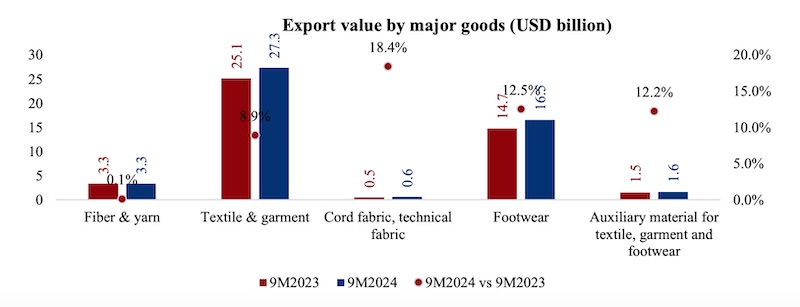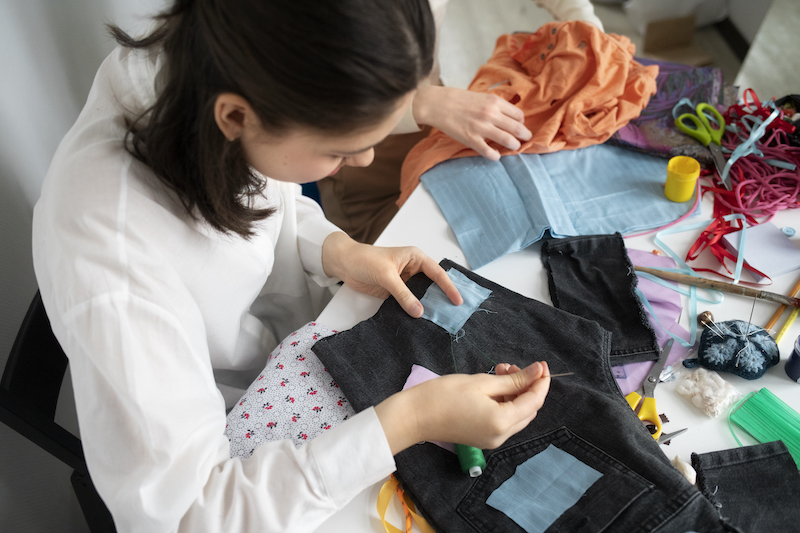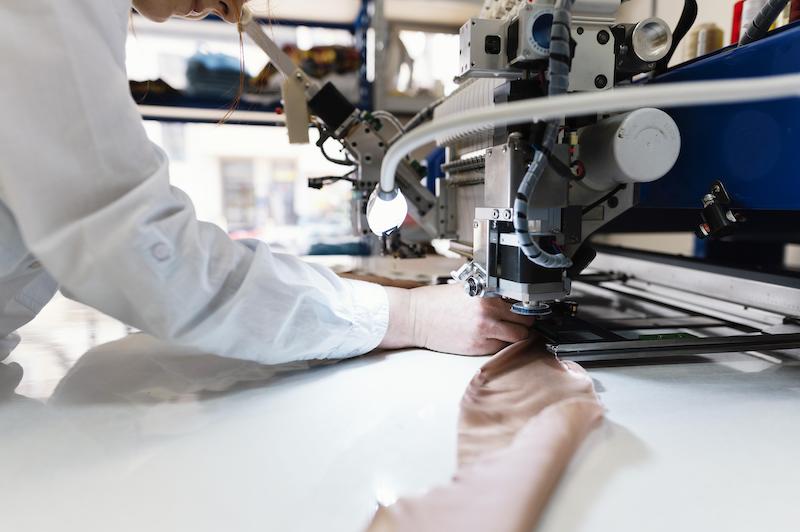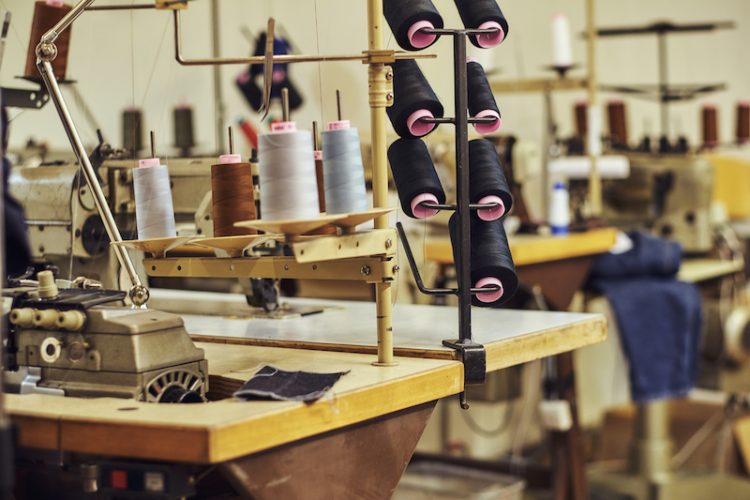As brands look beyond China for apparel manufacturing, Vietnam has emerged as a leading alternative. In 2024 alone, its clothing exports hit $44 billion, with over 3,800 factories and 2.7 million workers powering global supply chains.
Despite strong production capacity and competitive pricing, sourcing here does come with challenges. This 2025 Vietnam clothing sourcing guide provides verified data, practical tips, and key supplier insights to help you do it right.
Why Vietnam Is Becoming a Global Hub for Clothing Sourcing?
Talking of alternatives to China, Vietnam is one of the top options in the world. In 2024, Vietnam exported over $44 billion worth of clothing, making it the second-largest apparel exporter globally, just behind China and surpassing Bangladesh’s $40.5 billion in exports.
Vietnam garment industry started growing rapidly post-1995 with trade liberalization (ASEAN, WTO). At first, the country focused on basic manufacturing, offering competitive prices but limited export capacity and inconsistent quality. Eventually, it gained momentum in the 2000s through FTAs like CPTPP and EVFTA, which helped improve standards, expand market access, and attract foreign investment. As of 2024, it operates over 3,800 factories employing 2.7 million workers, serving major global brands.

And as brands shift away from China, especially due to uncertainties in the U.S.–China trade relations since 2018, Vietnam is receiving more orders and enjoys strong sourcing demand from global sportswear and fashion brands. Its main importers include the U.S. (47% of exports), the EU (~25%), Japan, and Korea. Several well-known brands source made-in-Vietnam clothing are Nike, Adidas (18% of its apparel in 2024) and Puma.
Key Characteristics of Vietnam Clothing Sourcing
So, you’ve seen how big the industry is. Now, let’s look at what makes Vietnam clothing sourcing stand out. Below are the key traits that set it apart from other low-cost manufacturing countries like Bangladesh, India, or Cambodia.
1. Most factories use the CMT model
Around 65 to 70 percent of garment factories in Vietnam operate under the Cut-Make-Trim (CMT) model. In this setup, you supply the fabric, trims, and designs, and the factory only handles the cutting, sewing, and finishing. Thanks to this, it’s easier to find a match, keep control over materials, and negotiate clearer pricing.
2. Fabrics are mostly imported
Vietnam doesn’t produce most of its own fabric. Around 80 percent is imported from China, South Korea, or Taiwan. This means you need to plan for fabric lead time separately, even if the factory offers full-package service. It also affects whether your goods qualify for tax-free access under trade deals like EVFTA.
3. Supply chains are not fully integrated
Because most factories only focus on garment assembly, the supply chain in Vietnam isn’t fully built in. Very few suppliers manage fabric weaving, dyeing, or finishing in-house. If your order includes printing, washing, or special packaging, the factory will likely outsource those steps. You may need to work with separate vendors or rely on a sourcing agent to coordinate everything.
4. Production zones are near ports
Most garment factories are located in industrial zones within two to four hours of major export ports like Ho Chi Minh City, Hai Phong, or Da Nang. These locations help reduce domestic transport time and speed up shipping. You can move goods to port quickly without adding much inland cost, typically within the same day using truck delivery from factory to port.
5. Best for mid-size to large orders
Vietnam is set up to handle production at scale. For CMT, minimum order quantities usually start around 500 pieces per style. For FOB, the typical MOQ is 1,000 to 3,000 pieces. Small test runs are possible but harder to place without using agents or flexible suppliers.

Types of Clothing Products You Can Source From Vietnam
Vietnam’s clothing manufacturing excels in producing high-quality apparel with a focus on reliable supply chains and competitive pricing. The table below highlights key sourcing garment categories where Vietnam stands out:
| # | Clothing type | Key feature | Typical MOQ (pcs/style) | Estimated FOB Price per Unit (USD) |
| 1 | Sportswear & Activewear | Expertise in technical fabrics, moisture-wicking, stretch | 300–500 | 8–15 |
| 2 | Casualwear Basics | Strong capacity for cotton blends, high-volume export, stable quality control | 300–500 | 6–11 |
| 3 | Workwear & Uniforms | Durable fabrics, compliance with international safety and durability standards | 500+ | 7–14 |
| 4 | Lightweight Outerwear | Advanced sewing for insulated yet light jackets, good for seasonality in export markets | 500–1,000 | 12–20 |
| 5 | Performance Outerwear | Waterproof, windproof technical fabrics | 500–1,000 | 15–25 |
| 6 | Functional Knitwear | Expertise in seamless knitting, compression garments for sports and medical use | 300–600 | 7–15 |
Where to Source Clothing in Vietnam: Key Regions and Infrastructure
Vietnam has several major clothing manufacturing regions. Each comes with different specialties, costs, and capabilities, which can impact your production success significantly.
1. Ho Chi Minh City
Ho Chi Minh City and surrounding provinces account for over 60% of Vietnam’s garment exports. This region focuses on casual wear, activewear, and work uniforms. Clothing sourcing costs here are often higher compared to the north, but compensated by a dense supplier network and advanced factory automation. Its proximity to Cat Lai Port, Vietnam’s largest container port, ensures fast export.
2. Hanoi
Moving north, Hanoi and neighboring provinces such as Bac Ninh and Hung Yen offer a different set of strengths. These areas focus more on knitwear, outerwear, and technical uniforms, providing competitive production costs and factories known for their technical expertise and compliance with strict international standards.
Thanks to the nearby Hai Phong Port, exporters here have efficient access to markets in Europe and North America. This makes Hanoi a strategic choice for buyers prioritizing quality and compliance while keeping costs manageable.
3. Da Nang
Further down the coast, Da Nang is an emerging garment manufacturing center gaining attention for its specialization in sportswear and lightweight outerwear. While smaller than the other two regions, Da Nang benefits from modern industrial parks and growing foreign direct investment.
The region’s access to Da Nang Port allows convenient export routes within central Vietnam. It is an attractive alternative for buyers looking for competitive costs and niche product expertise.
Beyond these hubs, Vietnam also offers specialized industrial zones like Long Hau Industrial Park near Ho Chi Minh City and the Vietnam-Singapore Industrial Park near Hanoi. These zones provide tax incentives, modern infrastructure, and streamlined customs processes, supporting efficient manufacturing and export logistics.

Sourcing Process for Clothing in Vietnam: A Step by Step Guide
Now that you understand why Vietnam is an ideal destination for clothing sourcing. How do you start the clothing sourcing process in Vietnam effectively, and what are the key considerations? Below is a detailed step-by-step guide to sourcing clothing in Vietnam:
Step 1: Define your product requirements
Create a tech pack with exact specs: fabric (e.g., Vietnam’s cotton or imported polyester), sizes, designs, and details like zippers or embroidery. Specify standards like Oeko-Tex or GOTS if targeting EU markets.
Step 2: Find Vietnam-based manufacturers
Search on VITAS directory, Saigontex, or meet suppliers at HanoiTex or VTG expos in Ho Chi Minh City. Focus on factories in Binh Duong or Dong Nai for sportswear, Hanoi for uniforms.
Step 3: Request quotes and samples
Send tech packs to 3-5 factories via email or Zalo, the primary communication app in Vietnam. Expect sample costs of $50-200, delivered in 7-10 days. MOQs range from 100-2,000 pieces. Language barriers can cause delays, so use a Vietnamese translator or agent for clarity if needed.
Step 4: Audit factories
Verify factories with third-party services like V-Trust or AsiaInspection to check capacity (e.g., 10,000 units/month) and compliance with EVFTA rules for EU exports. Also ensure BSCI or SA8000 certifications for ethical production, as required by US and EU importers.
Additional checks include:
- Label checks: Fiber content, “Made in Vietnam” origin labeling, and ASTM-compliant care instructions
- Compliance with chemical safety standards: OEKO-TEX Standard 100 and REACH, restricting substances such as azo dyes, cadmium, formaldehyde, lead, and mercury
- Safety documentation: Material Safety Data Sheets (MSDS) and programs like ZDHC (Zero Discharge of Hazardous Chemicals)
- Social compliance certifications: BSCI, SA8000, or WRAP
- Quality control: AQL inspections and regular on-site audits
Step 5: Negotiate and sign contracts
Negotiate FOB prices. You can make use of EVFTA for zero tariffs to the EU or CPTPP for reduced tariffs to Japan and Australia.
It’s also important that you include intellectual property protection (IP) in contracts to safeguard designs since such a thing remains a developing area in Vietnam, and legal enforcement can be inconsistent without clear contractual agreements.
Step 6: Manage production, logistics, and partnerships
Hire QIMA for in-line inspections at 30% and 80% production to catch defects. Expect delays from Tet shutdowns and sourcing materials.
Additionally, bulk Vietnam clothing orders usually take 30–45 days to complete. For EU shipments, Book shipping through Hai Phong for Cat Lai or Cai Mep ports, noting Cai Mep is often faster.
Best Vietnam Clothing Suppliers for Sourcing
Below is a concise guide to the best suppliers, tailored for businesses seeking quality, reliability, and low MOQs, with verified details to streamline your sourcing process.
| # | Manufacturer | Location | Specialization | MOQ |
| 1 | Vinatex | Hanoi | Uniforms, casual wear, yarn-to-garment services, exports to US/EU, largest textile group, 100+ factories, strong in EU markets | 1,000 pieces |
| 2 | Thanh Cong Textile | Ho Chi Minh City | Knitwear, casual clothing, eco-friendly fabrics, exports to Asia, 26M products/year, Oeko-Tex certified | 500 pieces |
| 3 | Phong Phu Corp | Da Nang | Sportswear, casual wear, sustainable production, exports to Japan, flexible MOQs, ISO 14001 certified | 200 pieces |
| 4 | TNG Investment | Thai Nguyen | Outerwear, sportswear, jackets, exports to US/EU, 257 sewing lines, 18M pieces/year capacity | 800 pieces |
| 5 | VinMake | Binh Duong | High-end fashion, sportswear, rapid prototyping, sustainability focus, lowest MOQs, ideal for startups | 100 pieces |
Additionally, VinaSources offers a purpose-built B2B platform that connects you directly with verified Vietnamese suppliers. You can explore diverse categories, access low MOQs, and request tailored quotes all within one platform. More importantly, VinaSources handles the full sourcing process for you, from factory matchmaking and quotation to domestic pickup and global delivery.
Contact VinaSources to simplify your Vietnam sourcing experience from start to finish.
